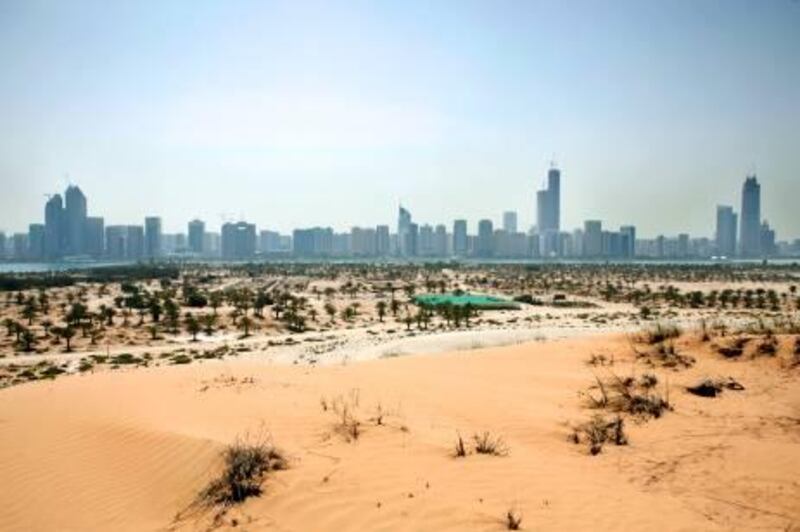Land reclamation has played a vital role in the growth of Abu Dhabi over the past 40 years, writes Vesela Todorova
The Palm Jumeirah, with its sun-soaked mansions above the rushing waters of the Arabian Gulf, is among the country's most visible examples of land reclamation.
But Abu Dhabi has also relied extensively on dragging land back from the sea.
The Al Raha Beach development, Yas Island and Reem Island are among the latest examples in the capital. Lulu Island was completed in the 1990s.
Even Sir Bani Yas Island, the capital's nature getaway, has undergone dredging and reclamation work.
How much of the capital's territory has grown through reclamation is unclear, but experts agree it has been extensive.
"The scale is enormous," says Richard Hornby, an associate partner at Nautica Environmental Associates. "I suppose what has been done is quite impressive. You can admire the engineering and vision perhaps.
"We hope environmental issues have been taken into account in the planning of these operations."
Creating new land from the sea is not unique to Abu Dhabi. Cities such as Hong Kong and New York City are growing in the same way.
"If you look at Manhattan Island, for example, there is virtually nothing along the coastline that is left that is natural," says Dr John Burt, the assistant professor of biology at New York University Abu Dhabi.
While stopping development is not possible, Dr Burt says: "We need to balance the needs of humanity for infrastructure and resources and those of the environment."
Development is just starting in Abu Dhabi, meaning it can avoid some of the mistakes made in coastal cities that have been urbanising for decades or even centuries, he says.
One reclamation method is filling in sabkhas, low-lying coastal salt flats along the western shores.
The Mussafah Industrial Area and the new Industrial City of Abu Dhabi have been built on sabkha flats.
While they may not appear beautiful at first, Abu Dhabi's sabkhas are the largest in the world and well-known to global geologists.
The habitat is still extensive but it is being "chopped out into concrete units", says Mr Hornby. "It is not such a good example of a habitat as it was 20 years ago."
There are also many projects that enlarge existing islands or create man-made ones from scratch. In the past two decades, up to 40 islands have been created, says Mr Hornby.
Examples include Hudayriat, which is half as big as Abu Dhabi Island and has been growing for the past 10 years.
Some of the islands are built by oil companies and used instead of rigs. While they have an effect on the environment, they are cheaper and safer than building rigs, and their impact is smaller, Mr Hornby says.
Yet other island developments are for personal use.
"A lot of these small islands not too far from Abu Dhabi have got magnificent buildings on them now," Mr Hornby says.
Maintaining the buildings from the sea requires vast amounts of rock, quarried from local mountains with significant effects.
And as well as creating the islands, huge amounts of sand are dredged from the sea bed, harming fisheries. The offshore developments are also affecting rare sea birds such as the Socotra cormorant.
Dr Thabit Al Abdessalaam, the director of marine biodiversity management at the Environment Agency - Abu Dhabi, says the agency is concerned about the balance between development and conservation.
"We are hoping to introduce strategic environmental measures," Dr Al Abdessalaam says.





